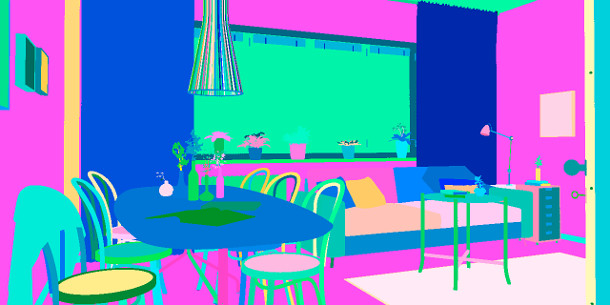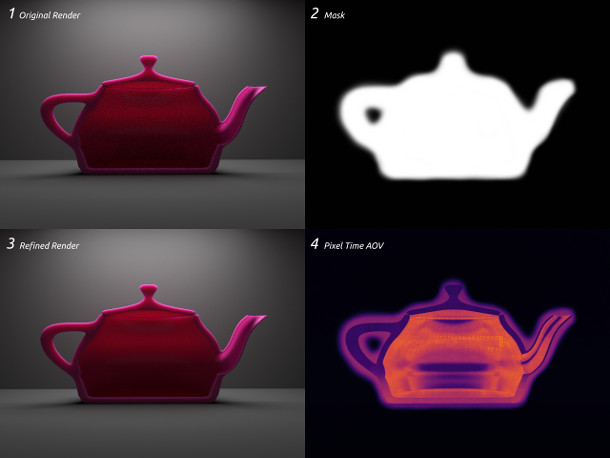Appleseed team releases appleseed 2.1

New features in appleseed 2.1, the latest version of the open-source physically based renderer for 3ds Max, Blender and Maya, include support for popular automated render ID matte generation system Cryptomatte.
The appleseed dev team has released version 2.1 of the open-source physically based renderer, adding support for Cryptomatte, on-the-fly compilation of OSL shaders, and a new fisheye camera.
The release also updates appleseed’s automated importance sampling system and adds an interesting new system enabling users to control sampling values manually using a black-and-white mask.
Support for Cryptomatte, on-the-fly OSL shader compilation, new fisheye camera
The first update to the renderer for nearly a year, appleseed 2.1 adds a range of new features, both expected and unexpected.
Expected features include support for Cryptomatte, Psyop’s automated ID matte generation system, which is now widely supported in other render engines.
It is also now possible to compile Open Shading Language (OSL) shaders on the fly. At the minute, the functionality is only exposed in the Blender plugin, but support is planned in the 3ds Max and Maya plugins.
In addition, the update adds a new fisheye camera with support for equisolid angle, equidistance, stereographic and Thoby projections.

appleseed 2.1’s Texture-Controlled Pixel Renderer makes it possible to generate a black-and-white mask (top right) based on a noisy raw render (top left), and use it to generate a refined, noise-free image (bottom left).
New Texture-Controlled Pixel Renderer lets users control render sampling values
Less predictable additions include what the devs describe as the Texture-Controlled Pixel Renderer, which uses a custom black-and-white mask to determine how many samples each pixel of a render receives.
Artists can generate a quick test render of a scene, use it as the basis of a mask, then use the mask to control a second, final-quality render, focusing computational effort on the noisiest parts of the image.
In addition, appleseed’s automated render sampling system has been switched to filtered importance sampling, which should improve quality, and make it easier to integrate new denoising systems in future.
The update also features an early implmentation of render checkpointing, making it possible to resume interrupted multi-pass renders from a given pass; or to add new passes to a previously completed render.
At the functionality, the system is only exposed in the command-line edition of the renderer, but it should be available via the GUi in future releases.
Smaller changes include the option to stop progressive renders after a user-specified length of time.
Availability and system requirements
Appleseed 2.1 is available for Windows Vista and above, Linux and Mac OS X 10.10+ under an MIT licence. The renderer is still officially in beta.
Integration plugins are available for 3ds Max 2016+, Blender 2.79+, Gaffer and Maya 2017+.
Read a full list of new features in appleseed 2.1 in the online release notes
Read a more general overview of appleseed’s feature set on the project website
